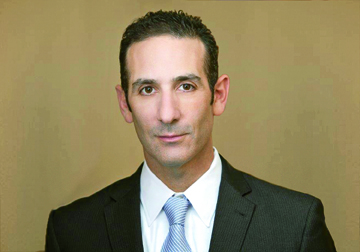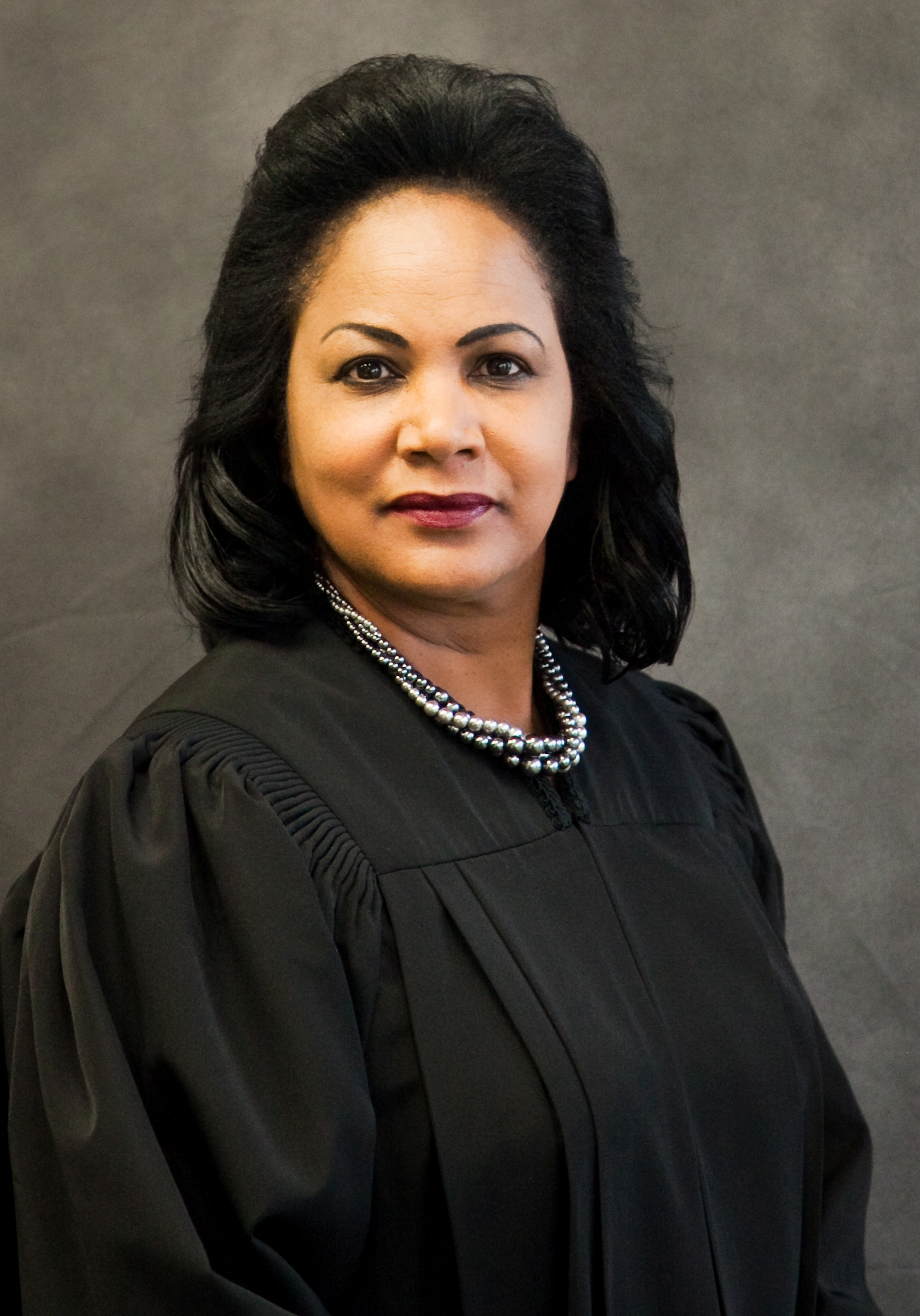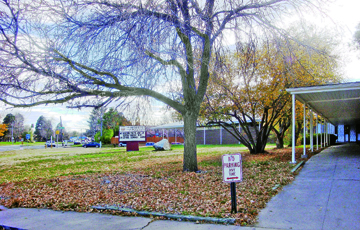
by Peter Boyles | Nov 21, 2014 | Blasting with Boyles
As a young boy growing up I could catch the Christmas spirit right after Thanksgiving. I attended a little blue collar working class elementary school, William McKinley, and we would sing Christmas carols — remember when you could do that? Such political incorrectness as Silent Night, Little Town of Bethlehem and Santa Claus is coming to Town. There’s now fatwa by the high lord executioners in political correctness that prohibits all such merriment in today’s public schools. All of this good cheer and peace on earth must be stomped out and be replaced by the winter solstice.
So here’s a list of holiday celebrations I knew nothing about as a boy. Hanukkah. Kwanza. Ramadan and, of course, Festivus.
 So let me bring a little focus on this time of the year. The funeral home across from the main gate of the steel mill I worked in was O’Neil’s. Run by a bunch of Irish drunks named O’Neil. One of the great things the O’Neils would do is put a live nativity scene in their front yard that consisted of a couple of dairy cows, a couple of sheep and maybe a goat. But I remember being in the sixth grade and from the cradle there was a beam of light that shone at night because this was the bed of the baby Jesus. I snuck under O’Neil’s fence, which was right across the street of the Edgewater Tavern to discover that the micks had put a bare 50-watt light bulb and extension cord in a little wooden cradle and I was shocked to see that a GE light bulb represented the Baby Jesus. Looking back on that I think it was my break point. After that the holidays have pretty much gone downhill.
So let me bring a little focus on this time of the year. The funeral home across from the main gate of the steel mill I worked in was O’Neil’s. Run by a bunch of Irish drunks named O’Neil. One of the great things the O’Neils would do is put a live nativity scene in their front yard that consisted of a couple of dairy cows, a couple of sheep and maybe a goat. But I remember being in the sixth grade and from the cradle there was a beam of light that shone at night because this was the bed of the baby Jesus. I snuck under O’Neil’s fence, which was right across the street of the Edgewater Tavern to discover that the micks had put a bare 50-watt light bulb and extension cord in a little wooden cradle and I was shocked to see that a GE light bulb represented the Baby Jesus. Looking back on that I think it was my break point. After that the holidays have pretty much gone downhill.
Here is what I think of the various elements that help make up the yuletide season:
Decorating
I hate decorating. My father and members of his relatives put up a string of lights that would stay there 365 days a year. Plug that baby in December first, unplug it a couple of days after the New Year and neighbors would tell the old man if a bulb was out.
Christmas Trees
I always thought that the tree was supposed to go up on Christmas Eve. It took my brother Jeff to figure out the reason we always got the tree on Christmas Eve was that it was as cheap as it was going to get. Selling a tree on Christmas Eve is like trying to sell a dead cat; no one wanted one. The old man would wait to 6 p.m. on Christmas Eve, go to Allegheny Boulevard and buy a good tree. What are the odds he was not going to get a good deal? By the way, only later in life did I discover that bubble lights weren’t just for the rich people.
Shopping
I hate shopping. I’m not a good gift buyer or giver. I always like women that would do their own shopping and I would just pay for it and of course you can never go wrong with cold hard cash. I’ve written about him before but I had a wonderful Uncle Barnie who was a Seabee and worked on a dredge on the Allegheny River. The greatest gift package he ever gave me was a knife and a cigarette lighter that, when you tipped it upside down, the sailor girl’s clothes came off. For a sixth grade kid that’s the mother lode. A knife and a nude woman.
Fighting
Fighting may not be a standard Christmas night activity for all ethnic groups but it is a venerated Irish tradition. Now the Mayor of Glendale and recent gubernatorial candidate Mike Dunafon and I had discussed and pondered this question. How many times on Christmas Eve did the tree get knocked over? It’s like the Richter scale if you ever saw your uncle fall into the Christmas tree or somebody pushed him in. I’m telling you, that’s Christmas. Fighting is part of that.
The Blues
I know for many it is the most wonderful time of the year, but I find myself suffering once again from the Christmas time blues. I don’t seem to get them on Halloween or Groundhog Day, the Fourth of July or Labor Day. I know I’m not alone and as my friends say there’s standing room only at AA.
Santa
I don’t hate Santa but then again we have the Easter Bunny, the Tooth Fairy, God and Jesus. We teach kids they’re all real. But now with a grandson I think it will be most fun to watch him fall in love with Santa.
Let’s recap. How many times are we going to listen to Mariah Carey’s “All I want for Christmas is You.” Do you remember your drunk parents? Remember getting Christmas cards you have no idea who they were from? Living on nothing but turkey-based meals for a week after Christmas?
Once those presents are unwrapped it’s depressing. So I don’t want to be too middle class and we’ll ignore the obvious target of big box stores moving product. But doesn’t every one of us remember when they found out Father Christmas does not exist. Why it is shocking is because your sainted parents have simply been lying to you for the first seven or eight years of your life.
My real problem is that I never did get that pony.
So happy “ramanahanakwanzma. “ No “Merry Christmas.”
Put up your holiday tree and shut up. Remember this folks, Christmas trees are a pagan ritual. Happy New Year.
— Peter

by Mark Smiley | Nov 21, 2014 | Main Articles
by Mark Smiley
Prominent Denver trial lawyer Danny Foster has had a contempt citation issued by Arapahoe County Judge Cheryl Rowles-Stokes that landed him in jail for a day overturned by a higher court who declared that Rowles-Stokes actions “were an abuse of discretion and in excess of her jurisdiction as a judge of the Arapahoe County Court.”
The case had become something of a cause-célèbre concerning abusive and incompetent judges in the Colorado judicial system. The jailing of Foster was subject of a scathing article by The Denver Post Editorial Page Editor Vincent Carroll.
F oster had come to the defense of Jonathan Ogungbenle (see front page story of the September 2013 issue of the Chronicle) a substitute teacher and nurses aid who was wrongfully criminally charged with indecent exposure while working at a school in Aurora, Colorado. Without waiting to see whether Mr. Ogungbenle was in fact guilty of any charges, his state nursing-aid certification was summarily revoked.
oster had come to the defense of Jonathan Ogungbenle (see front page story of the September 2013 issue of the Chronicle) a substitute teacher and nurses aid who was wrongfully criminally charged with indecent exposure while working at a school in Aurora, Colorado. Without waiting to see whether Mr. Ogungbenle was in fact guilty of any charges, his state nursing-aid certification was summarily revoked.
In the civil case Foster obtained through discovery from the Aurora Public School system the files of the two student accusers. When he gave notice that he intended to introduce them in the criminal case, Rowles-Stokes, a former Arapahoe County prosecutor, became outraged. She demanded that Foster surrender to her all copies of the records although it was unclear how she could suppress the documents in the civil case which she had no jurisdiction over. Foster nonetheless provided all written copies in his possession.
In a subsequent hearing Foster noted that an electronic version existed in his computer which he could not turn over except by giving her the computer’s hard drive. Rowles-Stokes became unhinged and hissed, “When a Court orders you to turn over all of your records, that means all of yours in no matter what format they are in.” Foster apologized saying he did not understand that to have been her previous order.
Rowles-Stokes then planned her revenge. To the surprise of Foster she handed back the physical copies and then recused herself from the criminal trial. Ten days later Foster obtained a full acquittal for his client with the jury deliberating for only 20 minutes. But the celebration following the not guilty verdict was cut short when sheriff deputies barged into the court room and physically took Foster across the hall to another court room where Rowles-Stokes was waiting.
Without conducting a hearing Rowles-Stokes declared Foster’s conduct “s o extreme that no warning was necessary.” She then found him in contempt and ordered him to jail immediately for one day. To the shock of his client Foster was handcuffed by the sheriff deputies and hauled to jail.
o extreme that no warning was necessary.” She then found him in contempt and ordered him to jail immediately for one day. To the shock of his client Foster was handcuffed by the sheriff deputies and hauled to jail.
Following his day in jail Foster appealed Rowles-Stokes’ finding of contempt. While up on appeal Rowles-Stokes continued what some viewed as her highly unprofessional conduct. Under the applicable judicial ethics rules a judge is not to hear a case where one of the lawyers or his firm is an adversary party to the judge in an outstanding case. Nonetheless Rowles-Stokes refused to disqualify herself in another case where a man was represented by Foster’s law firm. Only when it became obvious that her conduct would once again be appealed to a higher court did she reluctantly relent.
On appeal Rowles-Stokes’ attorney admitted that she had violated the applicable law by not providing a warning or a hearing but argued that the case should be remanded back to her to conduct what would be a sham hearing and the possible imposition of even more jail time. The District Court on October 22 shot down Rowles-Stokes’ arguments finding that she had not conducted “a fair and proper hearing in the sense contemplated by our system of justice” and that “Mr. Foster’s due process rights have been violated by Judge Rowles-Stokes.” The court also refused to remand the case and vacated the finding of contempt.
While Foster is now in the clear, the problem is what some are calling a rogue and unfit judge remains on bench. As pointed out by The Denver Post’s Vincent Carroll the state’s checks and balances on bad judges do not work. Rowles-Stokes was appointed to the bench in 2012 for a provisionary two year term and was subject to a retention election this past November. But as predicted by Carroll she was retained despite two-thirds of the attorneys who appeared before her telling the Commission on Judicial Performance she was unfit.
The reason for her retention as Carroll pointed out is that citizens often vote to retain judges many know nothing about and they are only ousted when a concerted campaign is carried by citizens. Observers point out some of the worst judges in the Colorado judicial system are former prosecutors appointed directly to the bench like Rowles-Stokes since prosecutors’ sense of entitlement is only exacerbated by joining the judiciary. The Commission on Judicial Performance indicates that over the last 20 years, 99.3 percent of all judges subject to a vote have been retained including two-thirds of the judges the Commission found wholly unfit to serve on the bench. For the 2014 election the Commission found only three judges to be unfit to be retained and two of those were just like Rowles-Stokes, former district attorneys appointed to county court positions. Like Rowles-Stokes, both were retained by the voters.
Carroll noted that the citizens will regret having Rowles-Stokes on the bench “given her vengeful lack of perspective in Foster’s case.”
The victorious Danny Foster in turn hopes the decision will have a broader significance. “I am very happy about the decision,” said Danny Foster. “I hope it will teach Judge Rowles-Stokes, and others like her, to understand that they need to treat all people with respect, professionalism and courtesy, whether they be lawyers, witnesses or parties to a case. A courtroom is no place for intolerance and a judge, above all else, needs to protect our constitutional rights, not violate them out of anger or spite.”
Unfortunately, according to critics, Rowles-Stokes is but the tip of an iceberg that will continue to grow unless reforms are instituted regarding how judges are retained in Colorado.

by Valley Gadfly | Nov 21, 2014 | Main Articles
Buchanan’s Planning Board Process Called ‘Corrupt, Consultant-Dominated, Unlawful Cesspool’ In Lawsuit
by Glen Richardson
In a blockbuster lawsuit filed October 14 in Denver District Court residents in Denver’s Crestmoor and Lowry neighborhoods have taken legal action to “reform a corrupt, consultant-dominated, unlawful process” regarding rezoning in the City and County of Denver. In particular the residents are outraged by the rezoning of a block of 70 acres of land previously called the Buckley Annex and now referred to as Boulevard One. It was once a part of the old Lowry Air Force Base and the site at one time of the Air Force Finance Center.
Residents in vario us east Denver neighborhoods are challenging the Denver Planning Board’s October 1 rezoning decision because it did not follow the criteria set forth in Denver’s Zoning Code. In an attempt to hide from court review the actions of the Planning Board, the City, after being served with the lawsuit, quickly withdrew one of its two zoning proposals “for further consideration.”
us east Denver neighborhoods are challenging the Denver Planning Board’s October 1 rezoning decision because it did not follow the criteria set forth in Denver’s Zoning Code. In an attempt to hide from court review the actions of the Planning Board, the City, after being served with the lawsuit, quickly withdrew one of its two zoning proposals “for further consideration.”
In addition the Lowry Redevelopment Authority (LRA) withdrew its C-MX-5 zoning application in an attempt to avoid judicial review of its actions. LRA is a quasi-governmental joint venture set up by the cities of Denver and Aurora to oversee the redevelopment of the Lowry Air Force Base. LRA once enjoyed broad support in the community but ever since the giveaway of open space land, called Lowry Vista, to a developer for $10 in a byzantine set of transactions, it is now viewed by many as every bit as corrupt and incompetent as Brad Buchanan and the Planning Board.
The complaint points out that LRA Executive Director Monty Force had “his own personal conflict of interest, with an LRA employment agreement that rewarded him financially for high density development on the Buckley Annex site.”
In the complaint it is alleged that LRA “hand-picked a group of people it believed shares its agenda for high density development and labeled the group its “Community Advisory Committee” contending these hand-picked supporters could speak for the interests of residents in surrounding neighborhoods.” Using that committee LRA then pushed through a badly tainted General Development Plan (GDP) notwithstanding widespread opposition throughout the affected neighborhoods.
As detailed in the homeowners’ complaint, Plaintiffs challenge the procedure Buchanan, who is the paid head of the Denver Community Planning & Development Department (CPD), and the Planning Board used to consider the rezoning Text Amendment for the Buckley Annex/Boulevard One parcel. The rezoning decision resulted in the adoption of a high-density framework with five-story buildings with minimal or no setbacks.
In addition, through the lawsuit, Plaintiffs seek to reform the “corrupt process” Buchanan and his Planning Board used in considering additional zoning changes to the Buckley Annex parcel and throughout Denver to prevent “future flawed zoning decisions that harm neighborhoods and residents.” Plaintiffs, however, are not challenging the four single family and row house zoning decisions, and that construction is underway.
Residents in Lowry’s surrounding stable residential neighborhoods with strong property values — Park Heights, Mayfair Park, Montclair, Crestmoor, Hilltop and Virginia Vale — do not want to see the Buckley parcel become a ghetto of new, high-density mixed-use buildings that create a traffic and parking nightmare for surrounding residents due to the lack of effective mass transit. Traffic jams already occur along Monaco Parkway, Quebec and Alameda. LRA wants to jam 800-plus residential units and an additional 150,000 square feet of retail and commercial space into the Buckley parcel. If approved, the development is projected to add an estimated 10,000 new car trips per day to the surrounding streets and neighborhoods.
Betrayal By Buchanan
In the lawsuit Plaintiffs claim Buchanan, the CPD and the Planning Board exceeded their jurisdiction and abused its responsibility, based on the evidence in the record of the October 2014 quasi-judicial hearing. Among other things, the lawsuit says that Buchanan and Planning Board members admitted on the record that they lacked time to read and consider the public comments submitted in writing before the hearing, and recognized that the process was flawed.
Even more scandalous, Buchanan allowed Board Member Jim Bershof to participate in the deliberations and influence the votes of the other members even though he has a financial interest in the Lowry Text Amendment. He also voted on the decision despite the fact he and his company OZ Architecture is advocating a zoning change f or the Mt. Gilead Church property across Monaco Parkway from the Buckley Annex parcel. The proposed change at the church property is based in part on the limited setbacks, tall building heights, and high-density reflected in Buckley Annex/Boulevard One.
or the Mt. Gilead Church property across Monaco Parkway from the Buckley Annex parcel. The proposed change at the church property is based in part on the limited setbacks, tall building heights, and high-density reflected in Buckley Annex/Boulevard One.
It was apparently on the advice from and the rationale of representatives in the City Attorney’s office that Bershof failed to disclose the details about his role with the Mt. Gilead Church application. According to the lawsuit Bershof’s voting on the decision, and his failure to recuse himself violated both the Denver Municipal Code and the City’s ethics rules.
We-They Showdown
Defendants in the lawsuit, in addition to Buchanan and board member Jim Bershof, are other members: Andy Baldyga, Shannon Gifford, Renee Martinez-Stone, Brittany Morris Saunders, Joel Noble, Susan Pearce, Arleen Taniwaki, Julie Underdahl, Frank Schultz and Chris Smith. The City and County of Denver is also named as a defendant. Plaintiffs are Chris O’Connor, David Mitzner, William O’Rourke and John Fischer. The plaintiffs’ attorney is area resident Greg Kerwin who is with the internationally renowned law firm of Gibson, Dunn & Crutcher.
O’Connor, president of the Lowry United Neighborhoods, and one of the plaintiffs, tells the Chronicle that like many others, “I am tired of our city leaders — elected purportedly to represent residents of Denver — adopt Hancock’s mantra that we must turn Denver into a world class city without asking how we will move or park people, or considering what existing taxpayers and existing neighborhoods want.” Furthermore, she adds, they haven’t considered whether our less-than-world-class fledgling transit network can realistically support this vertical vision?
Plaintiff Mitzner, a resident of Lowry since June 2000, says he believes “that the vast majority of east Denver residents do not want the City to allow a Cherry Creek type zone district in the midst of this east Denver residential area.”
John Fischer who is President of Crestmoor Park Home Owners Inc., First Filing, argues that Crestmoor should be “buffered from development, not diminished by it.” In a letter to the Denver Planning Board in April of last year he stated, “We oppose commercial development anywhere close to Crestmoor Park, a crown jewel of Denver and the centerpiece of our neighborhoods. It is crucial that we maintain the openness of the east side of the park along Monaco.” Longtime resident William O’Rourke lives in Park Heights, the first area built in Lowry. It is located on the southwest corner of Alameda & Quebec adjacent to the Buckley Annex.
INC Rolls Up Sleeves
Larry Ambrose, President of the Inter-Neighborhood Cooperation (INC) — the umbrella group for all of Denver’s neighborhood associations — says they have been concerned about the process as a result of both the Buckley Annex and St. Anthony’s (South Sloan’s Lake) developments. He says the two developments have followed almost parallel processes, with similar facts and almost identical abuses of process.
“As a result of resolutions passed by INC in February of this year, the Planning Office Director Brad Buchanan first agreed to a public process involving the neighborhoods to review how open space is calculated. In subsequent meetings he agreed to put all aspects of how GDPs affect the zoning and planning process including addressing whether the formula for calculating open space is adequate, whether the applicants for GDPs should control the planning and public meeting process and even whether GDPs should come after zoning rather than before zoning as it did prior to the 2010 changes to the Denver Zoning Code.” This process with INC, Ambrose reveals, is going on now with Denver Planning at the table.
“Speaking as an individual and not for INC as the organization has not yet taken a formal position, unfortunately, two of the largest developments that will have long-term ramifications and negatively affect thousands of current residents are being put into place as a result of GDPs that slipped through as a result of the current flawed GDP ordinance. The most devastating effect of these flaws is to allow the Buckley Annex and Sloan’s Lake GDPs to serve as ‘backdoor’ zoning where these developer manipulated plans which are not adopted plans approved by City Council, have taken on the appearance of legitimacy.”
Mayor, LRA Ignore Concerns
In these instances Ambrose says, “the GDP processes have had the effect of dismissing the neighborhoods’ legitimate concerns, confusing residents into just what the process is and what process is due while receiving rubber-stamp approval from the City. I can say that INC has taken stances before in support of challenges to City actions through the judicial branch where legitimate concerns have been ignored by the Mayor, his agencies and City Council.”
Lowry’s O’Connor also notes that the LRA continues to say there have been 60 meetings and a comprehensive public process. But to say 60 meetings indicates consensus is misleading. “There was no consensus. The overwhelming public sentiment was that the new development needed to comply with original Lowry Design Guidelines and preserve the overall look and feel of Lowry.” She also points out that consultants have spun the story that this is a compromise, and that most participants in the process are happy. O’Connor says, however, that two surveys by Crestmoor and Lowry during 2013 indicate that is not the case.
She also remembers that residents from numerous Denver neighborhoods — not just Lowry — opposed developer IRG’s process in creating a General Development Plan as well as the 2010 rezoning of the 80 acre Lowry landfill parcel called Lowry Vista. “We pointed out the City’s failure to follow City Plans during that process. However, although we believed the City’s approvals were without basis, the actions went unchallenged in court,” recalls Lowry land use watchdog O’Connor. Nevertheless, Denver residents are finally challenging the actions by the Planning Board.
O’Connor asks: Are our leaders oblivious to the sentiment that most residents dread the thought that our neighborhoods are poised to go the way of Cherry Creek? The Urban Center Zoning in Cherry Creek’s newly approved zone district is to be applied to both the Quebec and Monaco “edges” of Buckley Annex. “No doubt this will lead to further up-zonings in other sections of Lowry,” she warns. The piecemeal nature of these Lowry rezonings is deliberate and serves to wear out the public that has already seen four parcels on Buckley Annex rezoned, and faces at least three more.

 So let me bring a little focus on this time of the year. The funeral home across from the main gate of the steel mill I worked in was O’Neil’s. Run by a bunch of Irish drunks named O’Neil. One of the great things the O’Neils would do is put a live nativity scene in their front yard that consisted of a couple of dairy cows, a couple of sheep and maybe a goat. But I remember being in the sixth grade and from the cradle there was a beam of light that shone at night because this was the bed of the baby Jesus. I snuck under O’Neil’s fence, which was right across the street of the Edgewater Tavern to discover that the micks had put a bare 50-watt light bulb and extension cord in a little wooden cradle and I was shocked to see that a GE light bulb represented the Baby Jesus. Looking back on that I think it was my break point. After that the holidays have pretty much gone downhill.
So let me bring a little focus on this time of the year. The funeral home across from the main gate of the steel mill I worked in was O’Neil’s. Run by a bunch of Irish drunks named O’Neil. One of the great things the O’Neils would do is put a live nativity scene in their front yard that consisted of a couple of dairy cows, a couple of sheep and maybe a goat. But I remember being in the sixth grade and from the cradle there was a beam of light that shone at night because this was the bed of the baby Jesus. I snuck under O’Neil’s fence, which was right across the street of the Edgewater Tavern to discover that the micks had put a bare 50-watt light bulb and extension cord in a little wooden cradle and I was shocked to see that a GE light bulb represented the Baby Jesus. Looking back on that I think it was my break point. After that the holidays have pretty much gone downhill.





